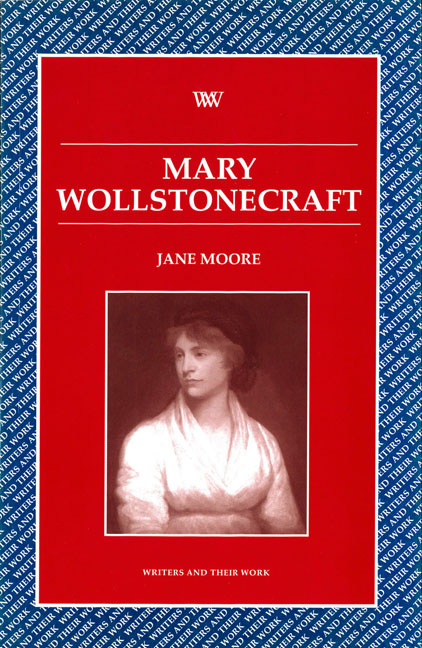Book contents
- Frontmatter
- Contents
- Acknowledgements
- Biographical Outline
- Abbreviations and References
- 1 Introduction: An Extraordinary Woman
- 2 Early Rebellion: Thoughts on the Education of Daughters, Mary. A Fiction, and ‘The Cave of Fancy`’
- 3 Professional Works: Original Stories from Real Life, The Female Reader, Translations, and Reviews
- 4 Revolutionary Protest: A Vindication of the Rights of Men, Vindication of the Rights of Woman, and The Wrongs of Woman: or, Maria. A Fragment
- 5 Romantic Ventures: An Historical and Moral View of the Origin and Progress of the French Revolution and ‘Letters to Imlay’
- 6 Final Destinations: Letters Written During a Short Residence in Sweden, Norway and Denmark, and Posthumous Works
- Notes
- Select Bibliography
- Index
3 - Professional Works: Original Stories from Real Life, The Female Reader, Translations, and Reviews
- Frontmatter
- Contents
- Acknowledgements
- Biographical Outline
- Abbreviations and References
- 1 Introduction: An Extraordinary Woman
- 2 Early Rebellion: Thoughts on the Education of Daughters, Mary. A Fiction, and ‘The Cave of Fancy`’
- 3 Professional Works: Original Stories from Real Life, The Female Reader, Translations, and Reviews
- 4 Revolutionary Protest: A Vindication of the Rights of Men, Vindication of the Rights of Woman, and The Wrongs of Woman: or, Maria. A Fragment
- 5 Romantic Ventures: An Historical and Moral View of the Origin and Progress of the French Revolution and ‘Letters to Imlay’
- 6 Final Destinations: Letters Written During a Short Residence in Sweden, Norway and Denmark, and Posthumous Works
- Notes
- Select Bibliography
- Index
Summary
After completing Mary, Wollstonecraft focused her gaze once more on the education of girls. If the problem of sexual inequality could not be solved, at least it could be traced to its source. Original Stories from Real Life: with Conversations Calculated to Regulate the Affections and Form the Mind to Truth and Goodness was published in London in 1788 by Joseph Johnson, and it inaugurated Wollstonecraft's career as a professional writer. She wrote it shortly after moving to London in August 1787. This was when she was 28; she had just been dismissed by Lady Kingsborough and was once again without an income or a home. Johnson proposed setting her up in a house of her own, which would be her payment for work undertaken for him as an author, translator, and contributor to his new monthly magazine the Analytical Review. The two formed a close working relationship, which lasted until Wollstonecraft's death.
As with educational books in general, children's literature was an important genre that increased in popularity and output throughout the eighteenth century, enjoying something of a boom at its end. Modern historians have attributed the success of children's books to the rapid expansion of the bourgeoisie. The middle classes prided themselves on offering more humane and rational values than the aristocracy. Sensitive parents, ambitious for their offspring, rejected fairy tale and folklore, the staples of children's reading for more than a century, as silly, escapist, and cruel. In place of those works, which frightened children into obedience with threats of hobgoblins, the bogy man, the Devil, and the terror of eternal punishment, the middle classes favoured books that would teach their children how to behave morally and in accordance with humanitarian principles. By the late eighteenth century, as Heather Glen observes, ‘children's books contain poems and stories on such subjects as the distresses of poverty, the evils of the slave trade and the need for kindness to animals’.
The fresh crop of educational authors yielded a number of influential women writers, among whom were Sarah Trimmer, author of Fabulous Histories (1786), also known as The History of the Robins, because the book uses bird characters to portray human morality, and Anna Laetitia Barbauld, the writer of Lessons for Children (1778).
- Type
- Chapter
- Information
- Mary Wollstonecraft , pp. 24 - 31Publisher: Liverpool University PressPrint publication year: 1999



